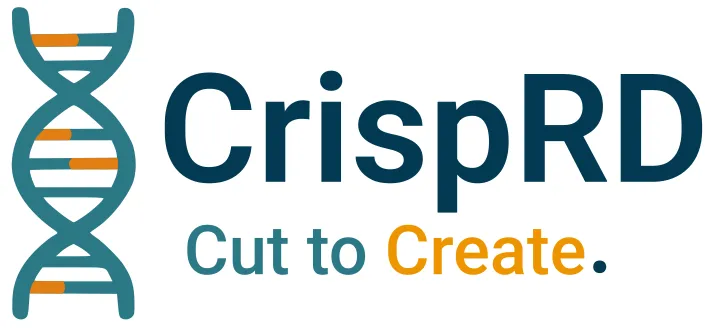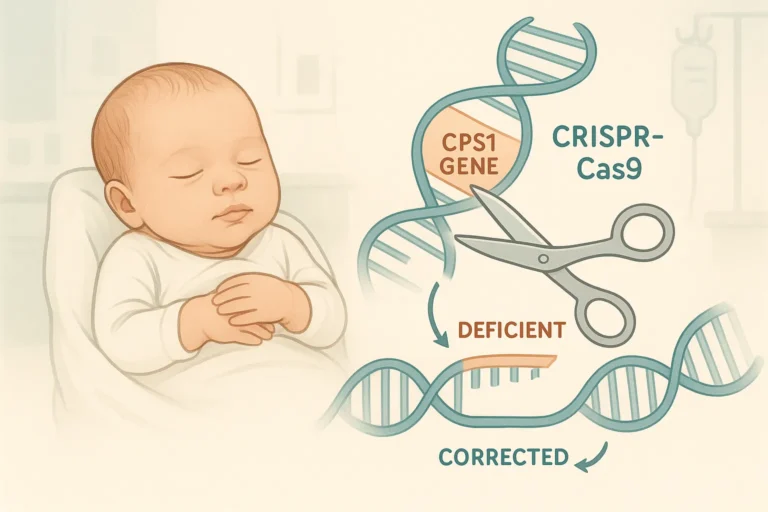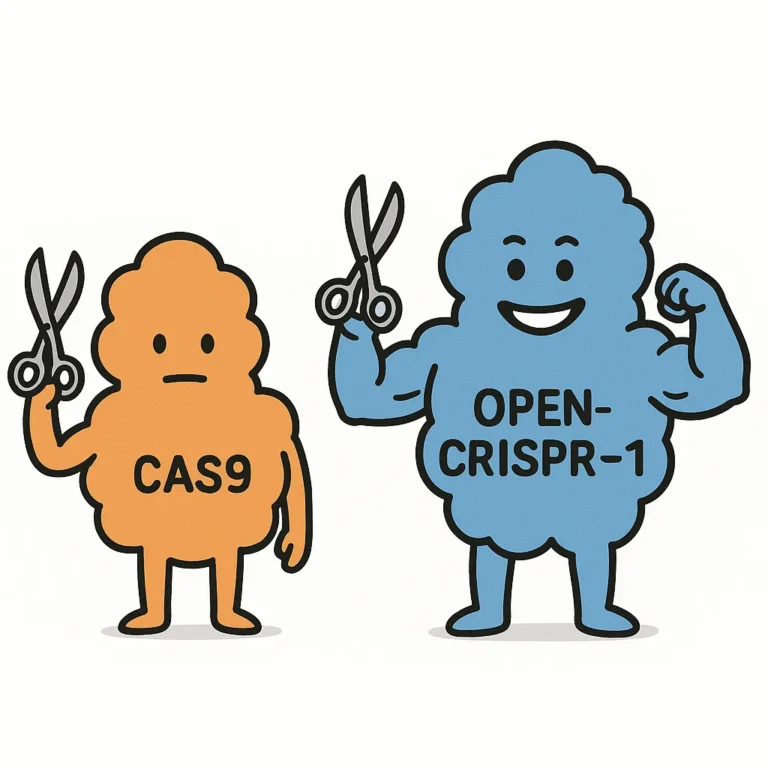Targeted transgene integration via CRISPR–Cas holds enormous potential for biotechnology and gene therapy but remains challenging due to limited control over DNA repair mechanisms. Classical pathways such as homology-directed repair (HDR) are restricted to proliferating cells, while non-homologous end joining (NHEJ) and microhomology-mediated end joining (MMEJ) can cause undesirable deletions at genome–transgene junctions, compromising genomic integrity.
Innovative Strategy Based on Deep-Learning Prediction
By leveraging the predictability of double-strand break (DSB) repair outcomes via MMEJ—modeled by deep learning algorithms such as inDelphi—a novel strategy has been developed. It relies on tandem-repeat microhomology (µH) repair arms tailored to the local sequence context, promoting frame-preserving transgene integration with minimal deletions. This approach was validated through in silico modeling and experimental testing at multiple loci. The design process is facilitated by the Pythia tool.
Optimized Performance and In Vitro/In Vivo Validation
Precise integration was demonstrated at 32 loci in HEK293T cells, showing a strong correlation between predictions and junction sequencing. The method protects both the genome and the transgene from excisions while enhancing efficiency—particularly in the presence of a guanine at the −4 position of the gRNA. Its efficacy was confirmed in vivo in Xenopus tropicalis embryos at the h11 site, with germline transmission and stable expression in offspring. The technique also enables endogenous fluorescent tagging in Xenopus and post-mitotic mouse neurons. Finally, the system was extended to scarless point edits via ssODN based on Pythia’s predictions.
Implications and Perspectives for Therapeutic Genomics
This innovative approach offers directional, single-copy, locus-specific integration, outperforming NHEJ-based methods. The use of short µH sequences facilitates large-scale manufacturing and viral delivery. Adapted for cells where HDR is inefficient, it paves the way for robust in vivo gene therapies. Pythia’s predictive modeling supports rational design of animal models and potential clinical tools aimed at precise correction of pathogenic mutations. Despite inherent limitations of double-strand breaks, this study highlights a new dimension of control and optimization for CRISPR-based genome rewriting.
📖Recommended Reading in Nature Biotechnology: Precise, Predictable Genome Integrations by Deep-Learning-Assisted Design of Microhomology-Based Templates, by Naert et al., 2025 — DOI: 10.1038/s41587-025-02771-0






